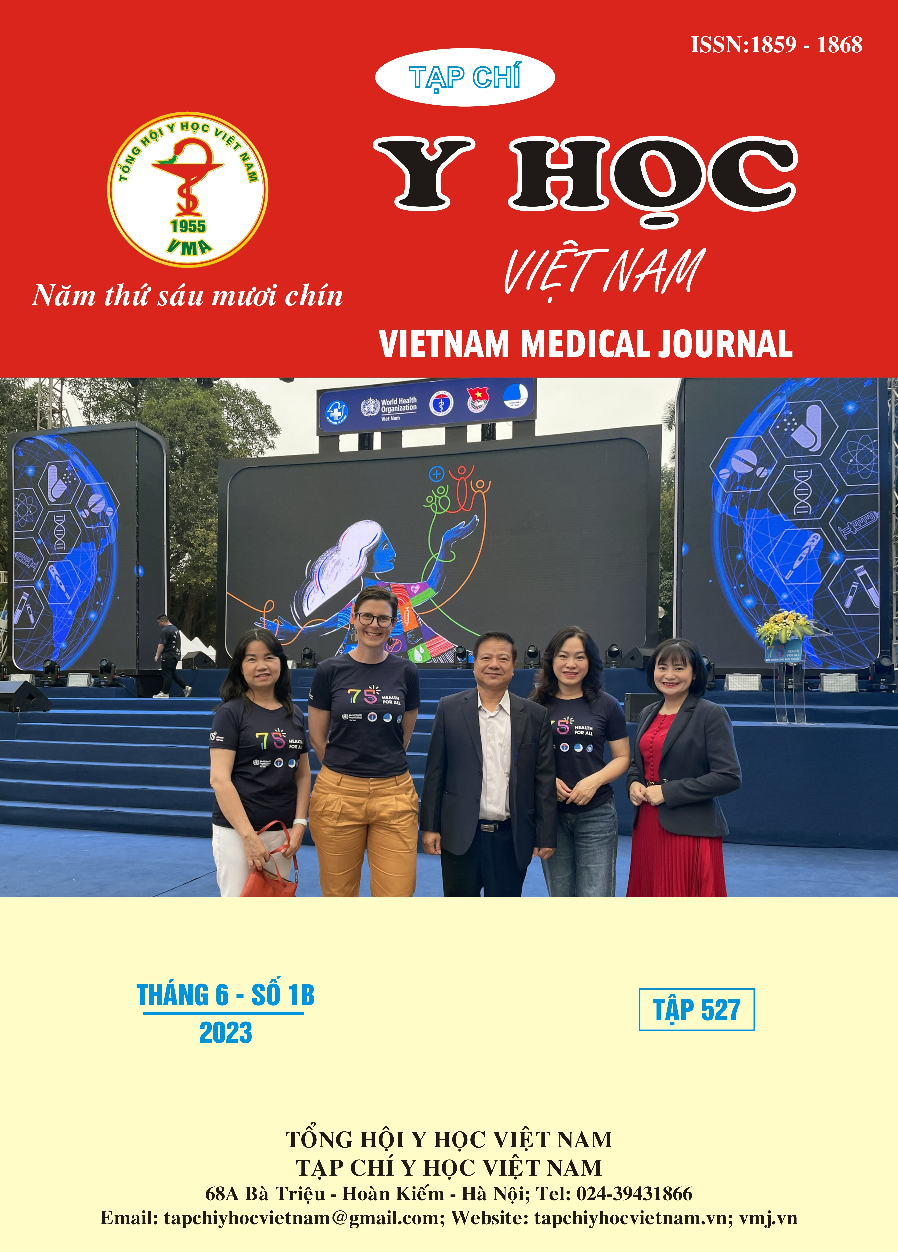CHANGES THE QUALITY OF LIFE OF CANCER PATIENTS AT THU DUC CITY HOSPITAL AFTER PALLIATIVE CARE INTERVENTION IN 2023
Main Article Content
Abstract
Background: Cancer is a common disease and has always been a health concern globally. With the rising number of patients, so comes the need for palliative care (PC). However, the implementation of CSGN in health facilities is still difficult and has not met the needs of patients. Objective: Assessment of change in quality of life (CLCS) of cancer patients at Thu Duc Hospital after palliative care intervention. Methods: The experimental simulation design did not have a pre- and post-intervention comparative control group (4 rounds). After 1 round of initial assessment and 4 rounds of post-intervention evaluation (1, 2, 4 and 8 weeks), 115 patients were fully monitored through rounds of inpatient and outpatient treatment at the Oncology Department, Thu Duc City Hospital, Ho Chi Minh City and primary caregivers. Results: CLCS scores increased after the intervention, which was especially significant at 2, 4, and 8 weeks. In addition, compared to working people, patients who quit their jobs had lower CLCS scores (KTC 95%: -7.22 to -1.72) Conclusion: In summary, the results of the study in 5 assessments showed that CLCS scores tended to increase. The average score after 8 weeks of intervention compared to the pre-intervention CLCS score increased from 55.4 to 65.4.
Article Details
Keywords
cancer patient, palliative care, intervention, quality of life, WHO-BREF, mem analysis, Thủ Đức hospital city
References
2. Ferlay J, Colombet M, Soerjomataram, Mathers C, Parkin DM, al. e. Estimating the global cancer incidence and mortality in 2018: GLOBOCAN sources and methods. Int J Cancer. 2019;144(8):pg1941-53.
3. Worldwide Palliative Care Alliance. Global Atlas of Palliative Care at the End of Life. 2014.
4. The UPMC Palliative and Supportive Institute. Palliative care, yesterday and today 2014 [Available from: https://www.upmc.com/-/media/upmc/services/palliative-and-supportive-institute/resources/documents/psi-history-palliative-care.pdf?la=en&hash= D274963350CAD0BCAF51FA18139184D84F569A9E. Accessed on 20 April 2019.
5. Kimberly Green, Ly Ngoc Kinh, Luong Ngoc Khue. Palliative care in Viet Nam: Findings from a Rapid Situation Analysis in Five Provinces. 2006.
6. Krakauer E. L, Eric L, et al. Vietnam's Palliative Care Initiative: Successes and Challenges in the First Five Years. Journal of Pain and Symptom Management. 2010;40(1):pg27-30.
7. Schröder M. L, Stöckigt B, Binting S, Tissen-Diabaté T, Bangemann N, Goerling U, et al. Feasibility and Possible Effects of Mindful Walking and Moderate Walking in Breast Cancer Survivors: A Randomized Controlled Pilot Study With a Nested Qualitative Study Part. Integrative cancer therapies. 2022;21:15347354211066067.
8. Mishra S. I, Scherer R. W, Geigle P. M, Berlanstein D. R, Topaloglu O, Gotay C. C, et al. Exercise interventions on health-related quality of life for cancer survivors. The Cochrane database of systematic reviews. 2012; 2012(8):Cd007566.


